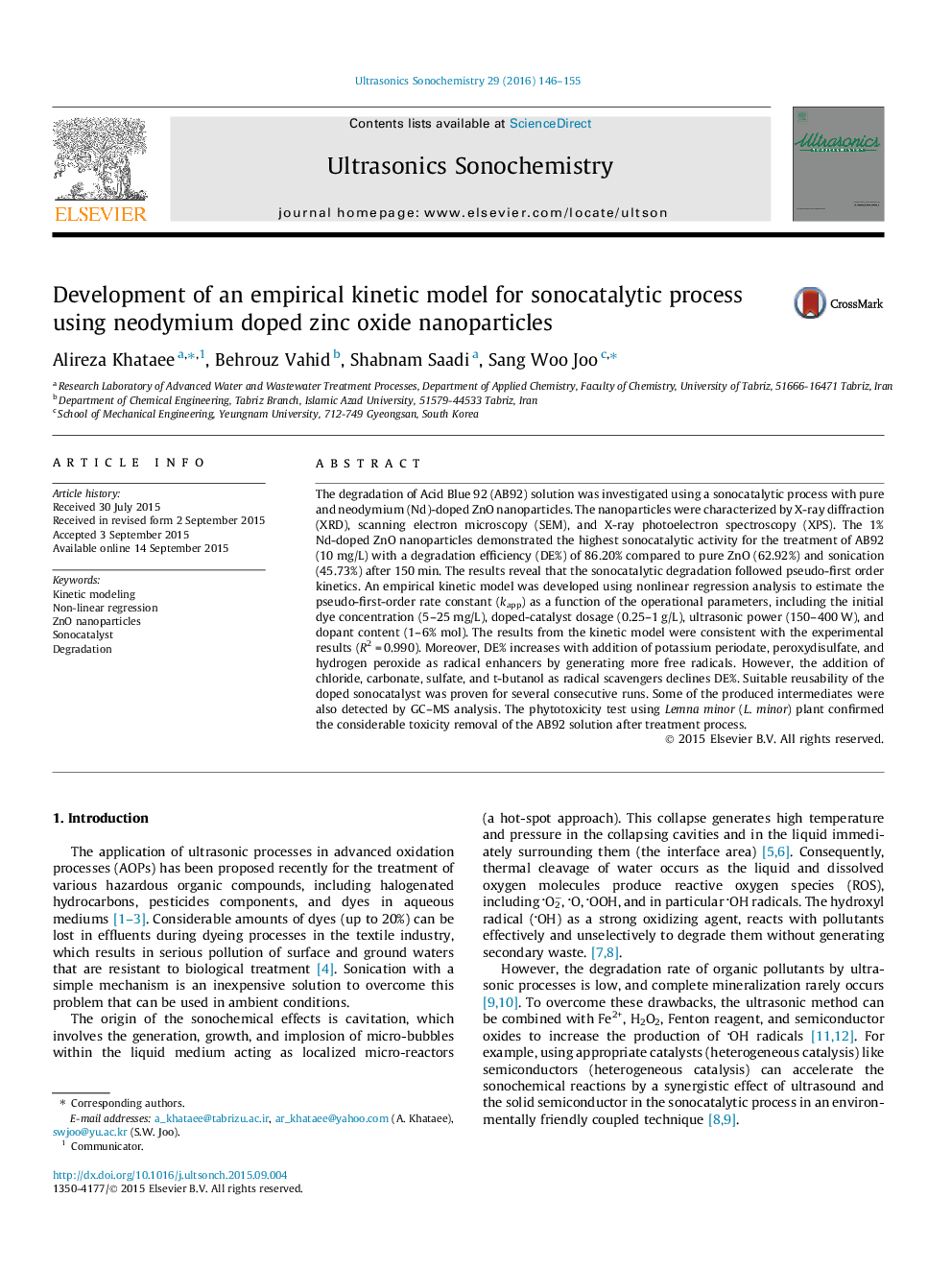| کد مقاله | کد نشریه | سال انتشار | مقاله انگلیسی | نسخه تمام متن |
|---|---|---|---|---|
| 1265859 | 1496875 | 2016 | 10 صفحه PDF | دانلود رایگان |
• Synthesis of undoped and Nd-doped ZnO by sonochemical method.
• Nd-doped ZnO nanoparticles as sonocatalyst for sonocatalytic degradation of a dye.
• Kinetic modeling of operational parameters influence on reaction rate constant.
The degradation of Acid Blue 92 (AB92) solution was investigated using a sonocatalytic process with pure and neodymium (Nd)-doped ZnO nanoparticles. The nanoparticles were characterized by X-ray diffraction (XRD), scanning electron microscopy (SEM), and X-ray photoelectron spectroscopy (XPS). The 1% Nd-doped ZnO nanoparticles demonstrated the highest sonocatalytic activity for the treatment of AB92 (10 mg/L) with a degradation efficiency (DE%) of 86.20% compared to pure ZnO (62.92%) and sonication (45.73%) after 150 min. The results reveal that the sonocatalytic degradation followed pseudo-first order kinetics. An empirical kinetic model was developed using nonlinear regression analysis to estimate the pseudo-first-order rate constant (kapp) as a function of the operational parameters, including the initial dye concentration (5–25 mg/L), doped-catalyst dosage (0.25–1 g/L), ultrasonic power (150–400 W), and dopant content (1–6% mol). The results from the kinetic model were consistent with the experimental results (R2 = 0.990). Moreover, DE% increases with addition of potassium periodate, peroxydisulfate, and hydrogen peroxide as radical enhancers by generating more free radicals. However, the addition of chloride, carbonate, sulfate, and t-butanol as radical scavengers declines DE%. Suitable reusability of the doped sonocatalyst was proven for several consecutive runs. Some of the produced intermediates were also detected by GC–MS analysis. The phytotoxicity test using Lemna minor (L. minor) plant confirmed the considerable toxicity removal of the AB92 solution after treatment process.
Figure optionsDownload as PowerPoint slide
Journal: Ultrasonics Sonochemistry - Volume 29, March 2016, Pages 146–155
